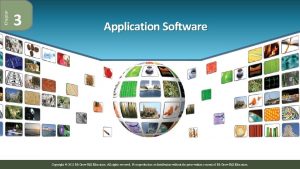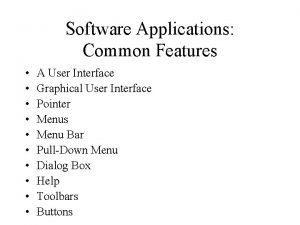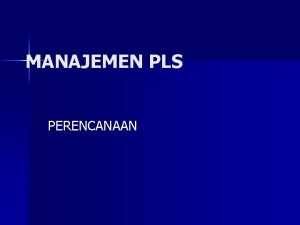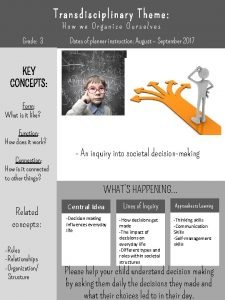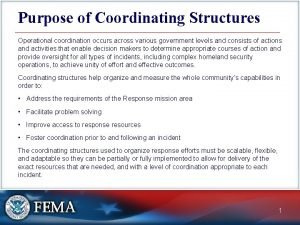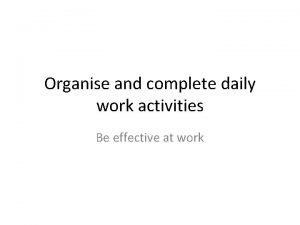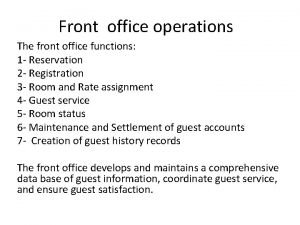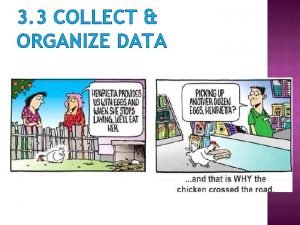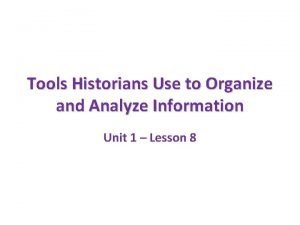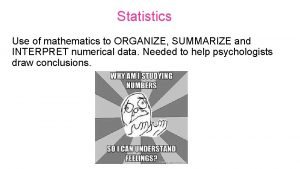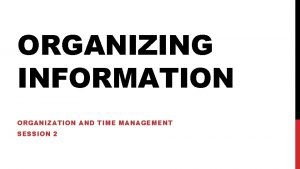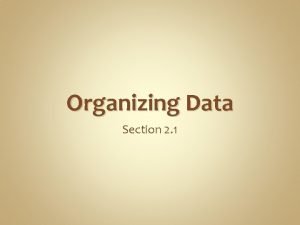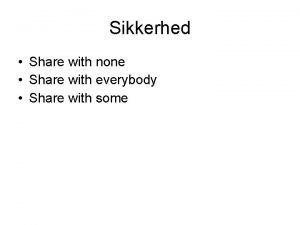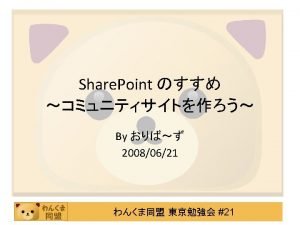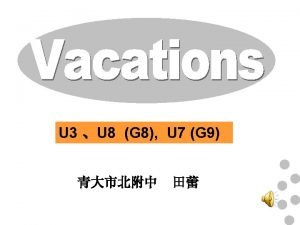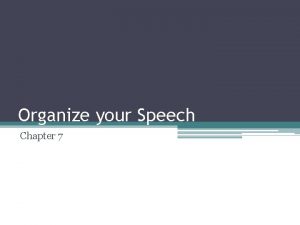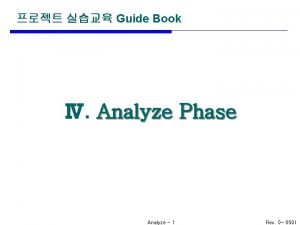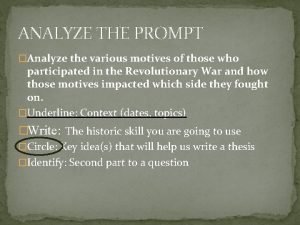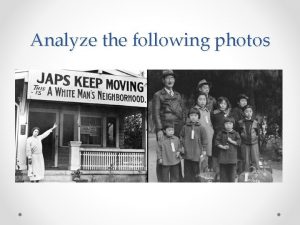Lesson Plan Management Organize Share Analyze Lesson Plan
























- Slides: 24

Lesson Plan Management Organize. Share. Analyze. Lesson Plan User Guide

Table of Contents Content Details Page About On. Course……………………………………………. 3 Getting Into On. Course…………………………………………. . 4 Navigating In “My Planner”……………………………………. 5 - 7 The Lesson Plan Toolbar…………………………………… 6 The Main Menu and User Menu………………………………… 7 The Moving Toolbar……………………………………… 8 Getting Started – Creating Your Template…………………. . . . 9 - 12 Opening Your Template……………………………………. 9 Setting Up Your Columns……………………………………. 10 Setting Up Your Column Headers………………………… ………. . 11 Setting Up Your Lesson Plan Block…………………. . . . 12 -13 Creating a Weekly Lesson Plan……………………………… … 14 -15 Selecting a Week and Loading Your Template…………………… ……. 14 Entering Your Plans………………………………………. 15 The Lesson Plan Editor………………………………………. . . 16 Submitting Your Weekly Lesson Plan To Your Administrator…………………. . . 17 Printing Your Lesson Plans……………………………………… 18 Viewing Administrator Comments…………………………………. 19 Lesson Plan Sharing………………………………………. . . 20 - 24 Steps To Sharing Your Lesson Plan……………………………. . 20 Accessing Another Teacher’s Lesson Plans………………. . . 21 Navigating Around in a Shared Lesson Plan…………………… ………. 22 Copying and Pasting From a Shared Lesson Plan……………. . . . . 22 - 24 Uploading and Attaching Documents………………………… ………. . . 25 - 27 Uploading To Your “Document Library”……………………………. 25 Managing Documents in Your “Document Library”……………………. . 26 Attaching Documents to Your Lesson Plans…………………………. 27 More Information on Document Attachments………………………… 28 Adding New Templates………………………………………. . . 29 Grade Level Expectations (GLEs) ……………………………. . 30 - 31 Accessing the GLEs………………………………… ………. 30 Inserting the GLEs Into Your Lesson Plan…………………………. 31 Comprehensive Curriculum………………………………… …. . . 32 - 33 Accessing the Comprehensive Curriculum………………………… 32 Inserting the Comprehensive Curriculum/GLEs Into Your Plans………………. . . . 33 Reporting………………………………………………. . . 34 My Calendar……………………………………………. 35 - 36 Accessing My Calendar…………………………………… 35 Adding Events to My Calendar………………………………… 36

Getting Into On. Course Step 1: Logon to On. Course 1. Open your Internet browser and go to Livingston Parish School Board Home Page http: //www. lpsb. org Select On. Course from the LPSB Web Page. OR Type www. schoolworksite. com on the URL address line. (If desired, add this site to your favorites in order to open the site quickly. ) 2. Click “Go” or hit the “Enter” key. 3. Logon to www. schoolworksite. com with the username and password that has been assigned to you, then click “Go” or hit the Enter key. *Your username is your full email address. An example of a username would be elaine. dalton@lpsb. org Your Default Password is oncourse. Step 2: Opening the Lesson Plan Screen (My Planner) 1. Click “My Planner” on the opening screen.

Navigating In “My Planner” The lesson plan screen opens to the current week’s lesson plan, which includes a panel down the left side of the screen (which will now be referred to as the “Navigation Tree”). From this “tree”, you will access most of the features On. Course has to offer. Each feature will be covered in depth in another section of this manual. Refer to the Table of Contents for page numbers. Note: New users will see a tutorial screen displaying several tips for using many On. Course features. You can close the tutorial tab and follow the steps below. The following is an example of the opening screen for “My Planner. ” A Calendar. This section allows you to use the calendar to move backward to previously written lesson plans and forward to work on upcoming lesson plans. The current week’s lesson plan remains open as well as any additional lesson plan weeks. Note: Lesson plans are archived by Schoolworksite. com for up to five years. Click on << or >> to move backward or forward one year. Click on < or > to move backward or forward one month. Click on any week in the monthly calendar to move to the lesson plans for that week. B Navigation Tree. This section allows you to navigate between all the features of On. Course. Each feature will be covered in depth in other sections of this manual. C Open Tabs are displayed for all open lesson plan weeks as well as for all other features opened from the “Navigation Tree” (unit plans, documents, calendar, comments, searched plans, reports, shared plans, and templates). The tab for your current week’s lesson plan will contain the date and a padlock. This tab will never close. To navigate between tabs, simply click on the tab you want to display. Click on the X to close any of the tabs that you no longer need.

Navigating in “My Planner” – The Lesson Plan Toolbar A. Hide/Show Frame Icon. Clicking on this icon will close and open the calendar panel at the left side of the screen. Closing this panel provides more “screen space” for the lesson plan grid. B. Double Pages Icon. (Copy Weekly Plans) Copies entire week’s lesson plans (all blocks) including text, homework, standards, document attachments, etc. B C G H A C. Clipboard Icon. (Paste Weekly Plans) Pastes the copied weekly plans into your lesson plan blocks. Used in conjunction with the “Double Pages” icon (Copy Week). This icon will be extremely helpful when you are copying from one week to another or when you are copying a co-worker’s plans. For more information on lesson plan sharing, refer to pages 19 – 23. D. Page Box. By default, four periods are displayed per screen (page). In On. Course, five pages are available for lesson planning. Although not realistic, up to 20 periods are available for lesson planning. Click on the right side of the box to choose the next page (set of four periods) to be displayed in the lesson plan grid. E. View Box. Lesson plans may be displayed in “Weekly View “or “Daily View. ” Click on the at the right side of the box to change the view. F. Load Template. Repetitive entries can be saved in a lesson plan template. Careful planning and design of your template will reduce the amount of repetitive typing necessary in each week’s lesson plans. Click at the right side of the box to load the template you previously designed. For more information on templates, refer to pages 8 -11, 13. D E F I Lesson plans appear in these blocks. G. Settings Button. Click here to adjust the width of the four columns displayed on the screen and to turn off the days of the week displayed down the left side of the lesson plan grid. H. Print Preview. Click this button to print the lesson plans currently displayed on the screen. Each page must be printed separately. I. Post Plans Checkbox. Click this checkbox to release the lesson plans to your administrator. Until this box is checked, no one, other than the teacher, can access the plans for that week.

Navigating in “My Planner” – The Main Menu and User Menu Main Menu • • • Each tab takes you to a different screen and activity: Home —returns to the opening screen of Schoolworksite. My Planner—displays the user’s lesson planning section. My Website—displays section so that teachers can edit website theme and modify content. Documents—allows teachers to upload documents for use with lesson plans or to display from website. Reporting—allows teachers to generate reports about standards linked in lesson plans. User Menu • Profile—Clicking on profile allows teachers to change their password from the default. • Support Center–-Click this link to get help using On. Course or to download On. Course-related files. • “Frequently Asked Questions” is a good way to review common issues related to getting started in On. Course. • “How to Videos”—allows you to watch quick training videos. • “User Manuals” will provide the user access to manuals of operation. Adobe Acrobat Reader must be on the computer in order for this feature to work. • “Contact Support” will allow you to send a message directly to Schoolworksite’s support personnel. Use this feature to ask questions or make suggestions. Log Out—closes Schoolworksite and returns to the log in screen.

Navigating in “My Planner” – The Moving Toolbar As you move the cursor into each of the individual blocks of the lesson plan display screen, four icons will appear in the upper right corner of the block as shown in illustration below. Each of the icons carries out a function for that individual block of the lesson plan. Hovering over each icon briefly will define its purpose. Double Pages Icon: (Top Left) Copies the entire contents of the block including text, homework, and standards Double Pages With Yellow Top Page Icon: (Top Right) Copies the standards linked to that particular lesson plan block Clipboard Icon: (Bottom Left) Pastes the copied information into the selected block Eraser Icon: (Bottom Right) Clears (deletes) the contents of the block Note: There is no “Undo” button, so use the eraser carefully. Using these tools can speed the insertion of information as well as the removal of information that is no longer needed in the individual blocks of the lesson plan screen.

Getting Started – Creating Your Template Information that will be repeated each time in a new week’s lesson plan should be included in your template. A great deal of time can be saved if your template is set up properly. Some examples of information (or settings) that should be included in your template include: the number of columns, column labels, and the components of your lesson plan (Bell Ringer/Anticipatory Set, Objectives, Procedures, Resources, Evaluations, Use of Technology, and Content Standards/Benchmarks/GLEs). Opening Your Template 1. Click on “Templates” from the “Navigation Tree. ” 2. After clicking on “Templates”, you will see two options: “Add New” and “My Template. ” Click on “My Template. ” 3. A blank “My Template” tab will open. Note: “My Template” is the default name assigned to your template. To change the name, click on the “Re-name” button.

Getting Started – Creating Your Template (Step 1) Now you are ready to begin setting up your template with all the information that needs to be repeated each week. Step 1: Setting up Your Columns Notice from the illustration on the previous page, the template opens to four columns. You may change that to one column, two columns, or three columns. Also consider the number of “pages” in your “book”. For example, if you teach six classes, you may decide to have three columns on page 1 and three columns on page 2, or you may decide to have four columns on page 1 and two columns on page 2. If you are teaching three classes in a block schedule, you may choose to have two columns on page 1 and one column on page 2, or you may decide to have one column on each of 3 pages. The organization of the lesson plan template is strictly up to you. Click on the “Settings” button on the main toolbar of the “My Template” tab. A window will pop-up which will allow you to adjust your columns. The percentages typed under each column number must add up to 100%. Examples of Column Settings For One Column: For Two Columns: All settings are per page. If you need more columns, switch to a new page using the page drop-down box. Repeat the directions above to set the number of columns for your new page. For Three Columns: For Four Columns (three big and one “skinny”)

Getting Started – Creating Your Template (Step 2) Step 2: Setting Up Your Column Headers 1. Click in the header row above each column (between the blue toolbar and the Monday block). 2. An “Edit Period Name Box” will appear. Type in the name of your subject. You may decide to name each column by the period or the block (or any combination). Click Save and repeat for each column. If you have multiple pages, repeat for each page. Examples of Course Headers:

Getting Started – Creating Your Template (Step 3) Step 3: Setting Up Your Lesson Plan Block 1. Place your mouse pointer in Monday’s block. Your mouse pointer will turn into a “hand”. Click your left mouse button. The Lesson Plan Editor window will open as shown in the figure below. 2. Click in the top portion of the Lesson Plan Editor to begin entering your lesson plan components. (Bell Ringer/Anticipatory Set, Objectives, Procedures, Resources, Evaluations, Use of Technology, and Content Standards/Benchmarks/GLEs). 3. When complete, click “Save & Close. ” Bell Ringer: Obj. : Procedures: Resources: Evaluations: Technology: Note: This upper textbox is for your lesson plans. While preparing your template, only the information that needs to be repeated every week should be typed at this time. Variable information is typed in this box after your template is loaded in preparation of your weekly planning. See page 13 for instructions on Creating a Weekly Lesson Plan. Note: This lower box is for homework information. While preparing your template, you may choose to enter the name of your subject or period. Anything typed in this box will be automatically copied to the homework section of your website and to your calendar.

Getting Started – Creating Your Template (Step 3 Continued) Step 3: Setting Up Your Lesson Plan Block 4. You now need to populate the remaining lesson plan blocks. If all the information that you typed in Monday’s block can be applied throughout all blocks, you can use the copy and paste buttons on the moving toolbar. To copy the block, click the copy button in Monday’s block. Move to another block. The moving toolbar will move with you. Click the paste button in the new block. Repeat for all blocks if applicable. Note: If you can not populate all blocks with the same information as you did on Monday, click on the box that needs to contain different information. Type the information in the Lesson Plan Editor. You can use the “Copy” and “Paste” buttons in the lesson plan blocks if this information can be repeated in another block. The last information copied using the copy button will be the information that is pasted when the paste button is selected – “copy once, paste many. ”

Creating A Weekly Lesson Plan The lesson plan screen automatically defaults to the current week, which is shown on the Date tab, when the screen opens. Note: New users will see a tutorial screen displaying several tips for using many On. Course features. You can close the tutorial tab and follow the steps below. Step 1: Selecting the Appropriate Week 1. If you are preparing lesson plans for the current week which opened as the default (Date tab), skip to step 2. To create lesson plans for a different week, click on the calendar to change the week for which you want to create lesson plans. 2. A new tab will open with the date of the week you selected. (Monday’s date) Step 2: Load Your Template 1. Before entering any plans, you must first load all the repetitive information you saved in your template. If you omit this step, begin typing your plans, and later choose to load a template, you will lose all information typed. 2. To load your template, click the of the “Load Template” drop-down box. Select the appropriate template from the list. 3. You will now see the columns, column headings, and all information typed in your lesson plan block when you designed your template. Note: All settings are PER PAGE. If you have more than one page of lesson plans, you will have to repeat the above step for each page!

Creating A Weekly Lesson Plan Step 3: Entering Your Plans 1. Click anywhere in the white block of the day and subject in which you want to begin. Note: Your mouse pointer will be a hand. 2. The Lesson Plan Editor will open. Notice the “Edit Plans/Homework” tab is active. The information you entered while preparing your template appears in the top portion of the editor. Click in the box wherever you want to begin typing. 3. Type homework in the lower portion of the window. Note: Homework is posted on your website automatically when the assignment date becomes the current date. 3. Click on the appropriate tab to attach unit plans and documents (if applicable) and to link the GLEs and the Comprehensive Curriculum for your lesson plan. Each of these features is highlighted in this manual. Refer to the Table of Contents for page numbers. 4. Click “Save” and change to a different day and/or subject (column header) by using the “Change Day/Period” dropdown boxes or click “Save & Close” to save changes and exit the editor. Objectives: Procedure: Assessment: Materials: Type Homework Here Note: Icons will appear in the lesson plan block for items linked to your lesson: “House” - homework assigned to the lesson “Flag” - GLEs/Comprehensive Curriculum linked to lesson “Paper Clip” - documents attached to lesson “Book” – unit plan attached to lesson

The Lesson Plan Editor Weekly lesson plans can be entered into the Lesson Plan Editor without closing after each day/subject by using the “Change Period/Day” drop-down boxes and the “Tabbed Windows”. More information can be found regarding the contents of each tab. Refer to the Table of Contents for page numbers. “Tabbed Windows” - allow you to enter/edit your plans, attach unit plans, attach documents, and link GLEs and the Comprehensive Curriculum. “Change Period/Day” drop-down boxes Word-processing Tool Bars If you are not sure what an icon does, hover the icon with your mouse pointer. A “tool tip” box will tell you what will happen if you click the icon. Copying your plans from Microsoft Office? If you are having problems with formatting your text in the editor and you copied your plans from a Microsoft Office product, try the following icons: Paste from Word or Paste Plain Text Format After copying your plans from Word, click this button. This will remove some of the formatting codes from the Office document that are no longer necessary in On. Course.

Submitting Your Weekly Lesson Plan To Your Administrator Once you have completed your weekly lesson plan, you are ready to post for administrative review. Step 1: Posting Your Plans 1. Click the “Post Plans” box. A check mark will appear in the box. (This box must be checked in order for your administrator to gain access to your lesson plans. ) 2. Click “OK” to the question, “Make plans available to administrator? ” 3. Note: Administrator’s have “view only” access. To Revoke Access: 1. Uncheck the “Post Plans” box. 2. Click “OK” to the question, “Revoke access to plans? ” Note: Your administrator no longer has access to your plans. Made a change to your lesson plan? After submitting your plans, any changes made will automatically copy over for administrative review. You may choose to revoke plans first, make the changes and then repost. However, this is not necessary.

Printing Your Lesson Plans Lesson plans may be printed with or without homework and standards. You also have a choice whether or not you want to include the names of unit plans and/or documents linked to your lessons. Step 1: Click the “Print Preview” button on the Main Toolbar. Step 2: Select Printing Options 1. The “Print Preview” window will open. At the top of the screen, select the items that you want to include as part of the lesson plan printout. 2. Homework – A check in this box will print all homework assignments in each lesson plan block. 3. Standards/Other – A check in this box will print all GLE numbers and Comprehensive Curriculum unit titles linked to each lesson. 4. Unit Plan Name(s) – A check in this box will print the unit plan name(s) linked to each lesson 5. Document Name(s) – A check in this box will print the document name(s) linked to each lesson. Step 3: Click “Print Page” button Exporting Your Plans to Microsoft Word or Excel Clicking one of these two buttons will allow you to export your plans to either Word or Excel. This allows for more formatting/page control.

Viewing Administrator Comments After reviewing your lesson plans, your administrator may choose to send you a comment regarding your submission. To view your comment, follow the steps below. Step 1: The first time you log on to On. Course after an administrator sends you a comment, you will see a “Post-It Note” over your lesson planner screen notifying you of the comment. To view the comment, click the “Click here to view!” link. Step 2: The “Comments” tab will open. The “Post-It Note” for the new message will be blinking. Click over the blinking note to view your comment. Step 3: A window will open with the administrator’s comment. To archive a comment, click on the “Move to Old Comments” button after reading your comment. Note: You can not delete comments. Clicking “Close” will close the window; however, your comment will remain in the current comments list. Note: To view old (archived) comments, click on the “View Old Comments” link. Once you have viewed the information, return to this link again which will now read “View New Comments”. This one link will allow you to switch between new and old comments.

Lesson Plan Sharing Steps To Sharing Your Lesson Plan STEP 1: Click on “Sharing” from the “Navigation Tree. ” After Clicking on “Sharing”, the “Sharing” tab will open. STEP 2: Enter the sharing ID number of the person that you want to grant access to your plans and click the “Add Teacher” button. A list of everyone who has granted you access to view their plans Note: Once a co-worker grants access to you, you will see his/her name (if you select the down arrow) in the drop-down box under the calendar. Your Sharing ID. In order for someone to give you access to his/her lesson plan, you must give him/her your sharing ID number.

Lesson Plan Sharing Step 1: Accessing Another Teacher’s Lesson Plans Click on the “Change User” drop-down box. A list of all coworkers who have granted you access to their plans will appear. Step 2: Select the person whose plans you would like to view. Once you have selected another’s plans to view, the main “Navigation Tree” will change to that person. Think of it as being logged on into his/her filing cabinet. You have the ability to access and search the Unit Plans, Templates, and all weekly Lesson Plans. You will not have access to his/her Document Library, Calendar, Comments, Sharing, and Reporting. See pages 22 -23 for instructions on copying and pasting from a shared lesson.

Uploading and Attaching Documents – Uploading Instructions Note: To link a document to a lesson plan block, you must first upload the document into your “document library. ” After your document is in your library, you may attach to a day’s lesson, to a homework assignment, or both. Step 1 Click on the Documents Tab at the top of the lesson planner. Step 3 An Add New Document Window will open. Click “Select” to navigate to the location where the file that you want to upload is saved. Step 2 Click on “Add Button. ” Step 4 Category – What type of document are you uploading? Examples include test, quiz, study guide, homework, worksheet, etc…After you type the category once, it will be added into the drop-down options. Description – Type a description of your document. For example: Test 1 – 1 st Grading Period; Reading Test 4 Grading Period 2; etc. Step 5 Click “Start Upload” button to upload to your document library. Note: It is recommended that you enter information into the category and description textboxes. This will be helpful for later searching of uploaded documents.

Managing Documents in Your “Document Library” To view your document(s), information about your document(s), or to delete your document(s), click on Documents Tab. ” Your “Documents” tab will open as shown in the picture below. A B C D E F A - Editing If you want to change the Category or Description for your document, click this button. The maximum file size is 5 MB per document. There is a 50 MB limit for all files stored in your document library. The number of documents and space available is located here. B- Preview To show a resizable preview of the document. C- Save Download one or more documents into a zip archive. D- Delete one or multiple documents. E- Reload Refresh your view. F- Icons/Details Changes your view of documents in the library. Viewing your documents: If you want to view a document in your library, double click on the name of the document under the name header. Deleting your documents: To delete a document from your library, name of the document and click the Delete button. If you are attempting to delete a document that is attached to a plan, your homework, or both, you will get a message telling you it is linked and asking you if you want to continue. REMOVING A DOCUMENT FROM YOUR LIBRARY WILL PERMANENTLY REMOVE IT FROM ONCOURSE.

Uploading and Attaching Documents – Attaching Instructions Note: Once you have uploaded the document(s) to your document library, you are now ready to attach it to a lesson plan, to a homework assignment, or both. Step 1 – Position your mouse over the block to which you Step 2 – The Lesson Plan Editor window will open. Click the want to attach the document. Click to enter into the Lesson Plan Editor. “Attach Documents” tab. To attach a document, select one option from the “STATUS” drop-down. See options for attachments below. Not Attached – document is residing in your library but not attached to anything. Attached to Lesson – document is attached to a lesson plan block. Attached to Homework – document is attached to the homework section of your website. Attached to Both – document is attached to your lesson plan block AND your homework assignment. Options for attachments:

Attaching Documents - A Little More Info. Documents Attached to Your Website: Keep in mind that whatever type of document you upload (Word, Power. Point, Excel, etc. ), the end user (parents and students) must have the program installed on his/her computer in order to view the document. It is recommended that you convert your document(s) to PDF before uploading to your document library. To do this, use the FREE program Cute. PDF Writer. When you attach a document to your plans, your homework, or both, the drop-down box will be highlighted green. After attaching a document to a lesson, you will see a paperclip in the lower part of your lesson plan block (next to homework and standards icon). You can attach more than one document to a lesson. If you hover the paperclip in your planner, a “tool tip” box will tell you the name of the file.
 Programs that organize analyze and graph numerical data
Programs that organize analyze and graph numerical data Common features of software
Common features of software Plan and organize
Plan and organize Micro lesson plan example
Micro lesson plan example Task 1833 in adm
Task 1833 in adm Utmb multi share plan
Utmb multi share plan How we organise ourselves grade 3
How we organise ourselves grade 3 Sometimes scientists make a mistake or
Sometimes scientists make a mistake or Why do religions organize space in distinctive patterns
Why do religions organize space in distinctive patterns Coordination structures help organize and measure
Coordination structures help organize and measure Organize and complete daily work activities
Organize and complete daily work activities Organize olmayan pasif kalabalık nedir
Organize olmayan pasif kalabalık nedir Basic functions of front office
Basic functions of front office These are mental templates by which we organize our worlds
These are mental templates by which we organize our worlds How did kublai khan organize mongol rule in china
How did kublai khan organize mongol rule in china Collect and organize data
Collect and organize data Organize
Organize Principle of design that indicates movement
Principle of design that indicates movement The use of mathematics to organize summarize
The use of mathematics to organize summarize Mental templates by which we organize our worlds
Mental templates by which we organize our worlds ön organize ediciler
ön organize ediciler Attention need satisfaction visualization action
Attention need satisfaction visualization action Organize information example
Organize information example How to organize qualitative data
How to organize qualitative data Why do historians organize history chronologically?
Why do historians organize history chronologically?
